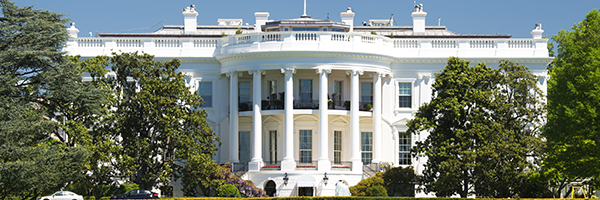All Posts

Drill baby, drill pledge sends oil prices down today
Oil slid as U..S President Donald Trump promised to boost U.S. crude production. Brent crude retreated almost 1% to near $80 a barrel.

Saturday Night Quarterback says, For the week ahead expect…
I expect big market moves from some of new President Donald Trump’s initial batch of executive orders. Trump has promised lots of moves for Day One. Now it remains to be seen what executive orders he actually signs in his first days in office and which ones move the financial markets.

Here’s the state of U.S. debt before President Trump takes office
Here’s the fiscal grim status of the United States on the Friday before Donald Trump is sworn in as President on Monday, January 20.
As of January 17, 2025, the U.S. national debt stands at approximately $36.17 trillion. This figure represents the total outstanding public debt of the United States government and can be broken down into two parts. Debt held by the public of $28.83 trillion and intragovernmental debt, that is debt that one part of the government owes to another, of $7.34 trillion. But in some ways that’s the good news.

Mortgage rates top 7%
Mortgage rates rose this week to the highest level since May 2024. The average 30-year mortgage rate jumped to 7.04% through Wednesday, January 15, up from 6.93% a week earlier. Average 15-year mortgage rates also rose to 6.27% from 6.14%, according to Freddie Mac It’s the fifth straight week that mortgage rates have moved higher.

Adding this dollar ETF to my Perfect 5 ETF Portfolio
Last week I sold my commodities ETF, the VanEck Agribusiness ETF (MOO) out of my Perfect 5 ETF Portfolio.
Today I’m replacing it with the Invesco DB U.S.Dollar Bullish ETF (UUP), UP 0.82% in 2025 as of January 14, 2025. The ETF gained 13.48% in 2024.

Big market reaction on a tiny move in CPI inflation
As of noon New York time today, January 15, the Standard & Poor’s 500 was ahead 1.30%. The NASDAQ Composite and the small-cap Russell 2000 were both up 1.80% on the session. Today’s big moves come on relatively minor changes in inflation trends in this morning’s report on CPI inflation in December. And I think they have more to do with how afraid Wall Street is that the Federal Reserve isn’t going to deliver at least one or two interest rate cuts in 2025 than with any big news in today’s report. The consumer price index (CPI) rose at an annual rate of 2.9% in December, up from a 2.7% annual rate the previous month. That increase was in line with expectations. On a month-to-month basis, the index rose 0.4%. The “core” index, which strips out volatile food and energy prices and is much more important to the Fed than the headline inflation number, rose at a 3.2% annual rate in December. That was down slightly from its annual rate of 3.3% in November, and less than economists had expected. It’s this dip in the annual rate of core inflation that has investors feeling so optimistic today.

More oil and lower oil prices into 2026
Global oil markets will face a widening glut in 2026 as OPEC brings back production and output from the United States, Canada and Guyana continues to grow, the U.S. Energy Information Agency said today, Tuesday, January 14. Today’s forecast was the agency’s first for 2026. World oil markets are expected to average a surplus of 800,000 barrels a day in 2026, the Energy Information Administration. That’s more than twice as large as the 300,000 barrel a day surplus the agency projects for 2025.

The BIG QUESTION: Does the selling in the stock market go farther? I think yes–and here’s what to do
Enough downside still ahead so that it makes sense to sell some of your portfolio, take some profits, and raise cash on the prospect of a buying opportunity or two ahead? In my opinion, Yes.

China’s trade surplus hits $1 trillion just as Trump takes over trade policy
On Monday, January 13, China announced that its trade surplus reached almost $1 trillion in 2024. China’s General Administration of Customs said the country exported $3.58 trillion worth of goods and services last year, while importing $2.59 trillion. The surplus of $990 billion broke China’s previous record, which was $838 billion in 2022. Strong exports in December, including some that may have been rushed to the United States before President Donald Trump can take office and raise tariffs, propelled China to a new single-month record surplus of $104.8 billion. When adjusted for inflation, China’s trade surplus last year far exceeded any in the world in the past century.

Apple’s fourth quarter iPhone stumble is bad news for stocks
Apple (AAPL) sold 5% fewer iPhones globally and lost ground to Chinese rivals in the last quarter of 2024.
The iPhone slipped a percentage point to a 18% worldwide market share in 2024, according to Counterpoint Research data. rival Samsung Electronics also gave up share to Android smart phone makers from China, led by Xiaomi and Vivo. For the full year, Apple saw a 2% decline in sales, according to Counterpoint Research. In 2024 the global smart phone market grew by 4%.

Saturday Night Quarterback says, For the week ahead expect…
I expect more inflation turmoil and the beginning of a challenging earnings season.

Jobs surprise–economy delivers stronger than expected performance in December
In December U.S. economy in December added the most jobs since March and the unemployment rate unexpectedly fell. Nonfarm payrolls increased 256,000, exceeding all but one forecast in a Bloomberg survey of economists. The unemployment rate fell to 4.1%, while average hourly earnings rose 0.3% from November, a Bureau of Labor Statistics report showed Friday. For 2024 as a whole, the economy added 2.2 million jobs—-below the 3 million increase in 2023 but above the 2 million created in 2019. The data almost certainly assured that the Federal Reserve would not cut interest rates at its January 29 meeting. As of 11 a.m. New York time, the yield on the 10-year Treasury had climbed another 5 basis points to 4.74%.

Mortgage rates keep climbing and it’s taking a toll on home sales.
U.S. mortgage rates rose for a fourth straight week. The average for 30-year loans was 6.93%, up from 6.91% last week, Freddie Mac said in a statement Thursday.\

China’s deflation problem got worse in December
China’s consumer price index rose 0.1% in December from a year earlier, in line with the median forecast of economists surveyed by Bloomberg. Factory deflation extended into a 27th month, though the producer price index recorded a slower drop of 2.3%, the National Bureau of Statistics said Thursday. For the full year, consumer prices only inched up 0.2% from 2023, well short of the 1.1% gain economists had predicted at the beginning of 2024.

Tough road ahead for farmers and food commodity prices–I’m selling some farm stock positions
U.S. farmers harvested some of the largest corn and soybean crops in history this year. The timing couldn’t be much worse for farm incomes and commodity prices. And for shares of farm stocks.



